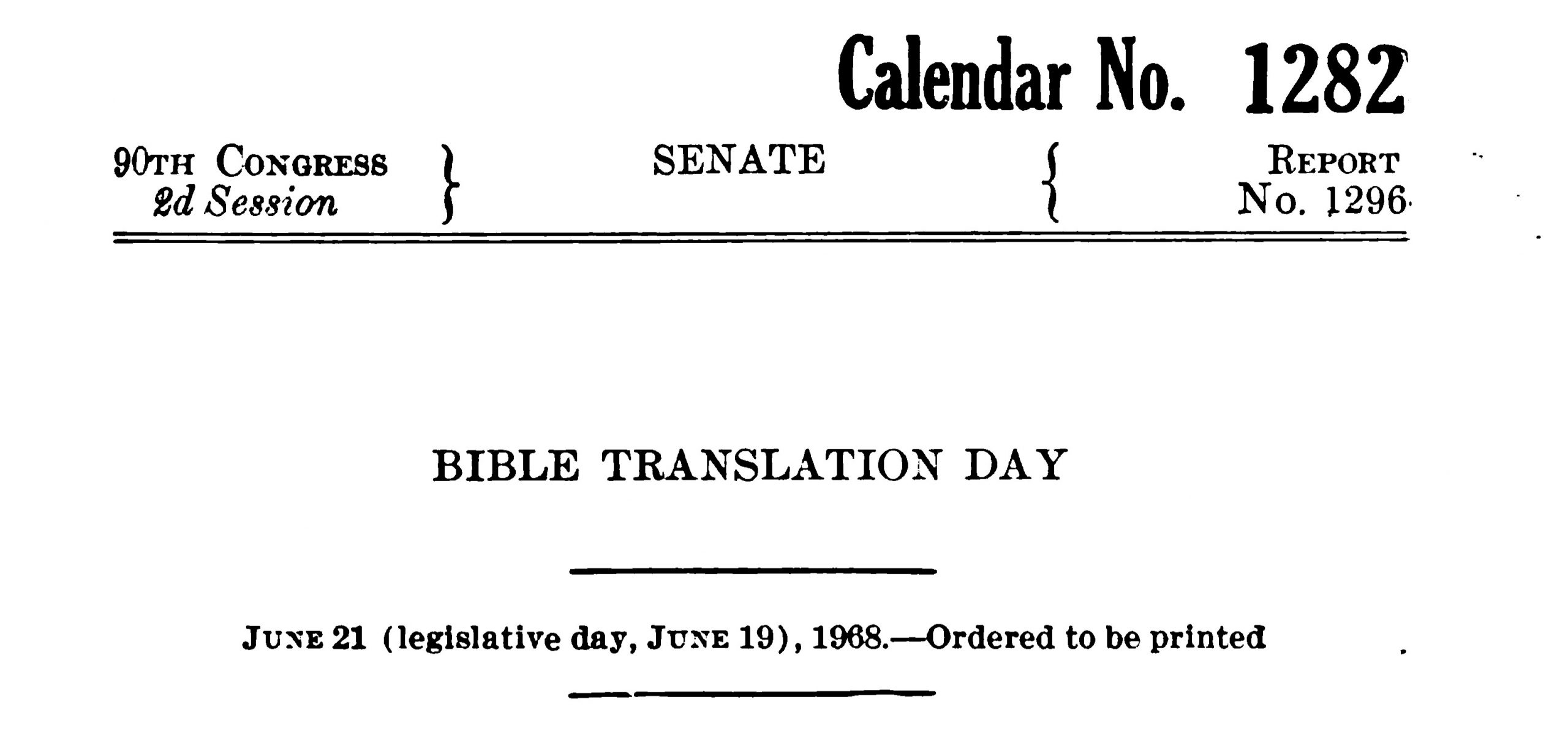September 30 is officially Bible Translation Day according to an act of the U.S. Congress:
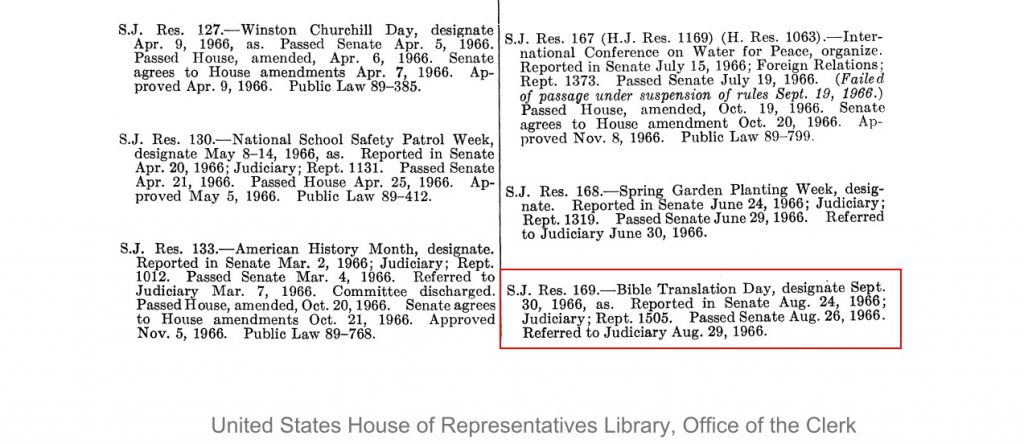
William Cameron Townsend (founder of Wycliffe Bible Translators and SIL) was a friend of Oklahoma Senator Fred R. Harris, and it was he who suggested to Mr. Harris that there ought to be a day to honor Bible translators. September 30th was chosen because it is the day in which Jerome (the one who translated the scriptures from Greek into the Latin Vulgate in the 300s A.D.) died.
Here is the full text of Oklahoma Senator Fred R. Harris’s (D) speech introducing Joint Resolution 135 on the Senate floor: (click here for a high resolution image.)
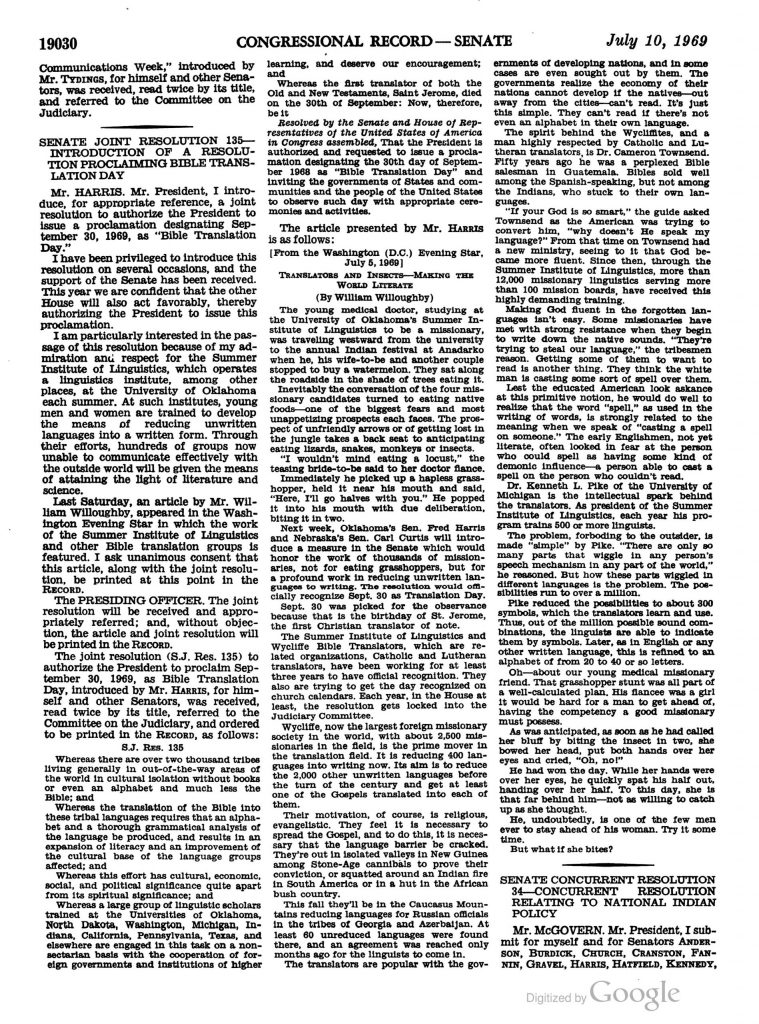
Congressional Record: Proceedings and Debates of the 91st Congress First Session (Vol 115–Part 14) 1969. (Google Books)
The following is a copy of Report No. 1296 from the United States Congressional Serial Set, June 21, 1968.
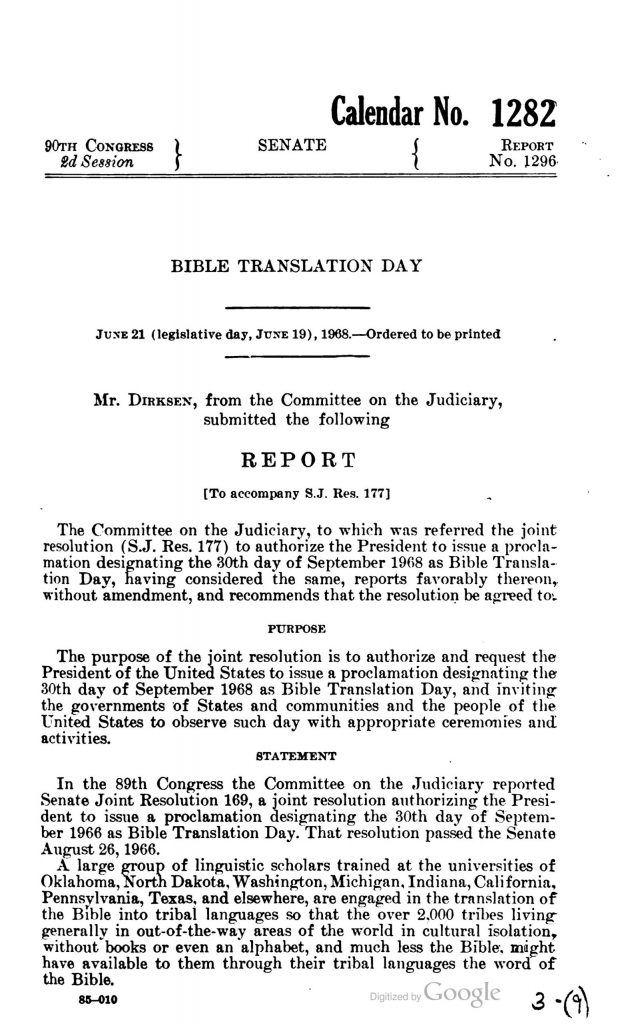
Also, in 2017, the United Nations adopted resolution 71/288 to observe September 30th as International Translation Day. Obviously the UN observance is more broad, and not strictly related to Bible translation, but since the Bible is the most translated text in the world, we can still observe this day as Bible translation day internationally!
Interesting Bible Translation Trivia
In 1921 the British and Foreign Bible Society printed a little booklet containing “specimens of 543 languages in which the British & Foreign Bible Society has published or circulated some portion of the Word of God.” Here is a sample:
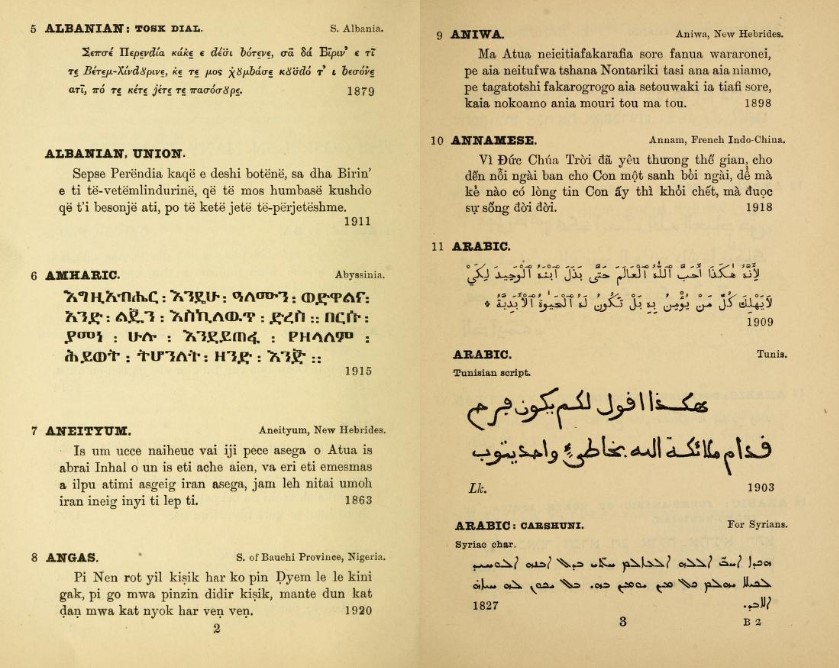
John Eliot, “the apostle to the Indians” has the distinction of being the first to print a complete Bible in America! His translation of the KJV into the Algonquian language was first published in 1663, and a 2nd edition was printed in 1685.
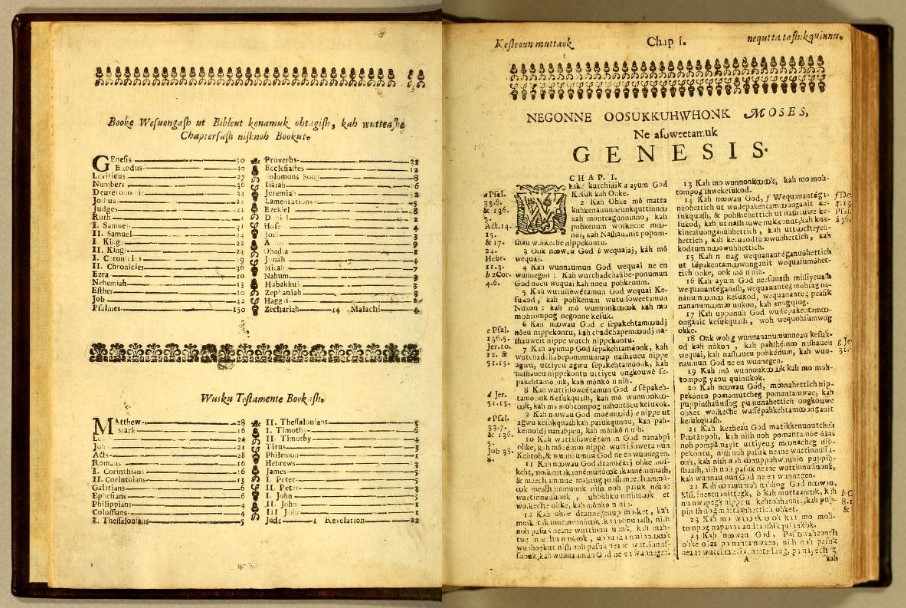
English translations of the Bible go all the way back to a 995 A.D Anglo-Saxon translation from the Vetus Italica (an older Latin translation prior to Jerome’s famous Latin Vulgate.) In the image below you can see the +1,000 year-old Anglo-Saxon translation alongside Wycliffe and Tyndale’s more modern translations. (See also The English Hexapla, which shows the original Greek, as well as the Wycliffe, Tyndale, Cranmer, Geneva, Douay Rheims, and KJV 1611 texts.)
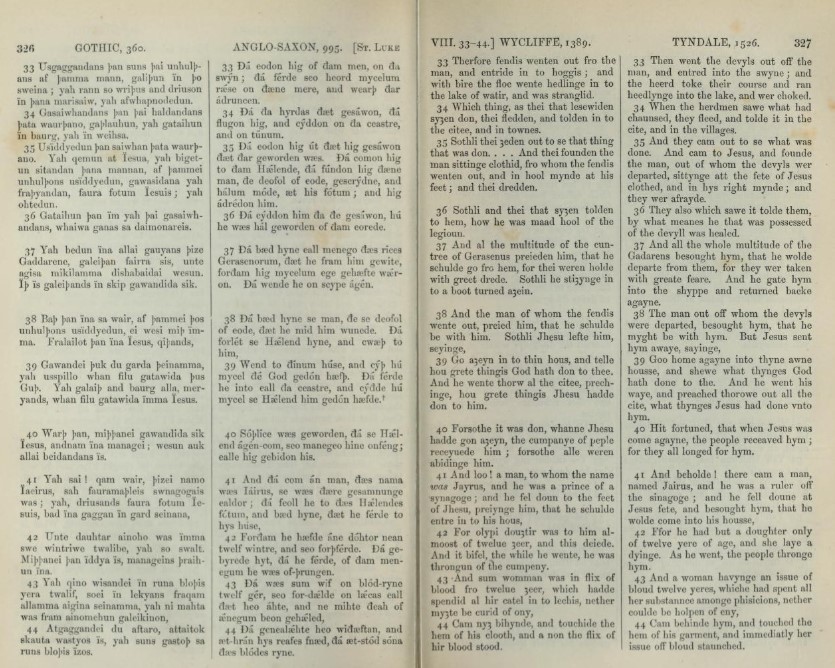
If you are a Greek/Hebrew/translation geek, then one of your must-reads is the original preface (particularly the section entitled “The Translators to the Reader”) of the 1611 KJV Bible. Read the 1611 KJV preface in modern English here, or check out this scan of the original 1611 KJV Bible if you’re into 400 year old books and antiquated English. 🙂
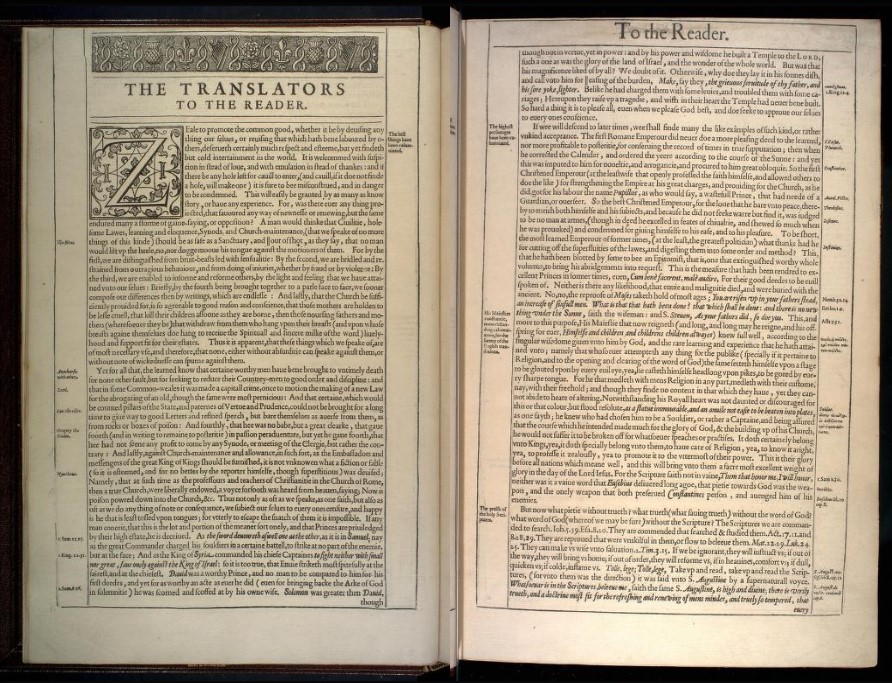
For some fascinating reading (and images of old Bibles) on the history of English Bible translations, check out this timeline of English Bible History!
If you are interested in the history behind the KJV, I highly recommend the booklet entitled The Authorised Version: A Wonderful and Unfinished History by C. P. Hallihan (Trinitarian Bible Society).

